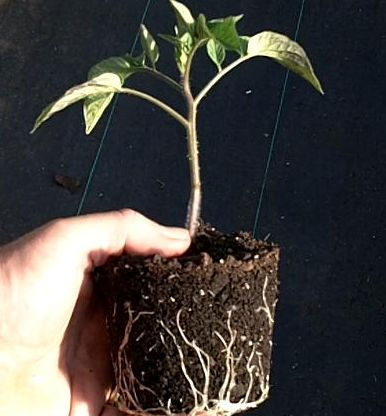Timing is everything
This is the same headline I had last week when I urged you to plant your onions, shallots, spinach, and peas early.
This week, like every year for about 40 years now, I am advising you to hold off on planting warm season crops like tomatoes, peppers, cukes and squash.
These are called warm season crops for a reason. 400 million years of evolution has developed these crops to start to grow around the end of May here — when the soil has warmed enough to build up the soil biology.
We pay tax dollars to researchers who tell us to wait for the end of the month to plant here. Instead of listening to their suggestions, we follow the advise of a neighbor, friend, or retail business trying to make an early sale.
It is not just that cold soils are inhospitable to the biological helpers that I mentioned above. Many factors cue these plants on what to do — and when. Besides soil temperature, plant get signals from the length of days, the angle of the sun in the sky, even the light spectrum that these angles generate.
Today we grow very confused plants — they are getting a lot of mixed signals. Their age is telling them one thing, other signals are telling them something else, and their soil helpers aren’t ready to help them.
A tomato, or any other plant, should make as much vegetative growth as possible before it starts to flower. We have seen tomatoes grow into mounds 4 feet across and tall before they even begin flowering. Last year I pinched the first two sets of flowers off to encourage them to build more energy. The result was they ripened their first fruit in early August — ahead of the 75 days they were supposed to take to mature. They also continue to bear fruit right until the first killing frost.
Vigorous plants, bursting with energy, ripen fruit more quickly than less healthy plants. They also stay healthier all summer because they have matured into healthy, robust plants before they encounter the stress and energy drain of producing fruit and ripening seeds.
The most productive vegetable plants are the plants that make rapid, uninterrupted growth. Buying transplants and letting them sit in a pot too long causes enough stress to trigger early flowering and loss of vegetative growth — resulting in lower productivity and more pest problems. I have seen this happen in side by side comparisons of tomatoes growing in the same soil and the same size pots.
Your plants should look like the one pictured on the right — on the last week of May — the right balance of roots and top growth — and before the plants become root bound.
When we first started in business, growers took pride in timing their warm season seedlings to be ready to plant at the end of May. Today, with consumers ready to plant on the first warm day in spring, growers have plants ready early. None of them think it is a good idea to plant early. I talk to nursery people all the time who have given up trying to educate and take the easy road of selling when people want to buy. They are afraid of losing a quick sale instead of taking the harder, and more frustrating road of trying to educate.
I know people who read this will not take my advice and it will cost us sales, but the people who do listen will be more successful. Every year, more people tell me how this works better, makes growing plants easier and their gardens more productive. That gives me the encouragement to write about this again this year.
FYI — spring bulbs and flowering trees are weeks behind normal flowering times this year. That should be warning us of colder than average soil temperatures.
